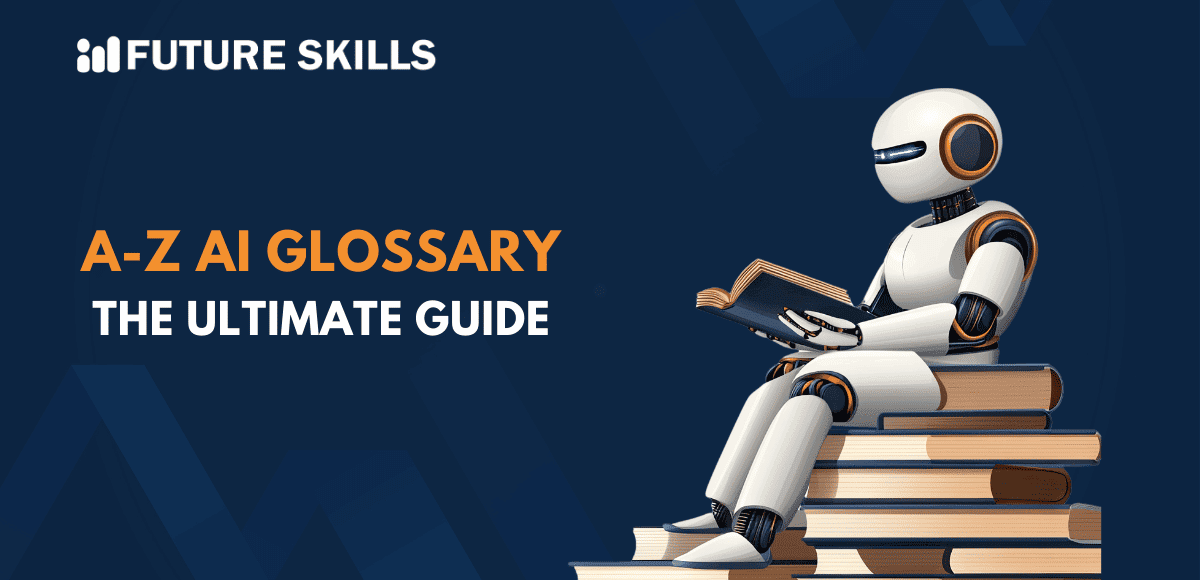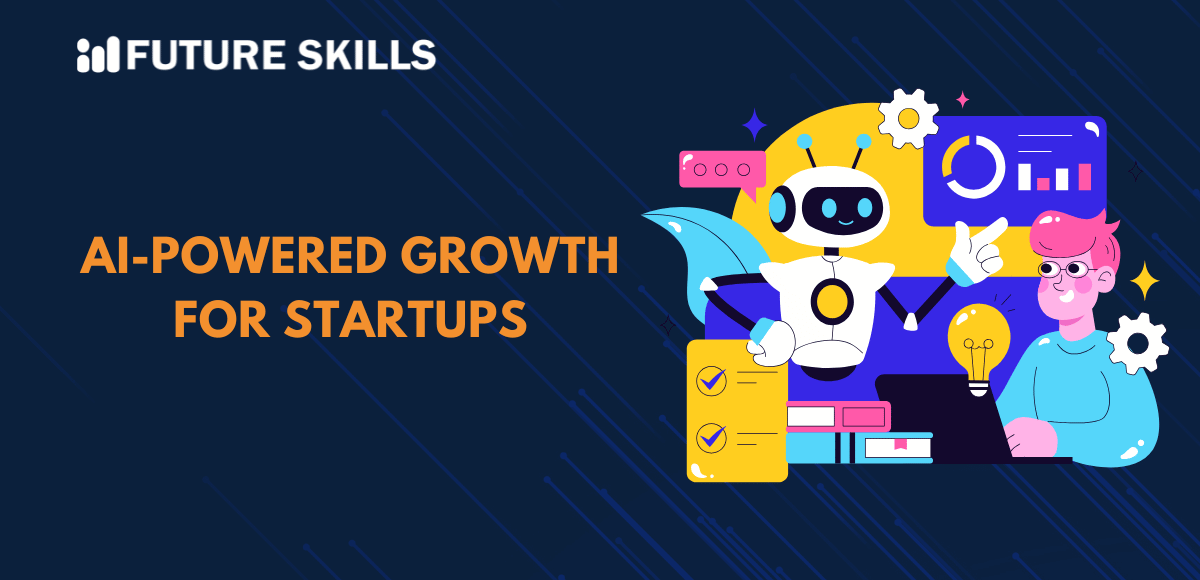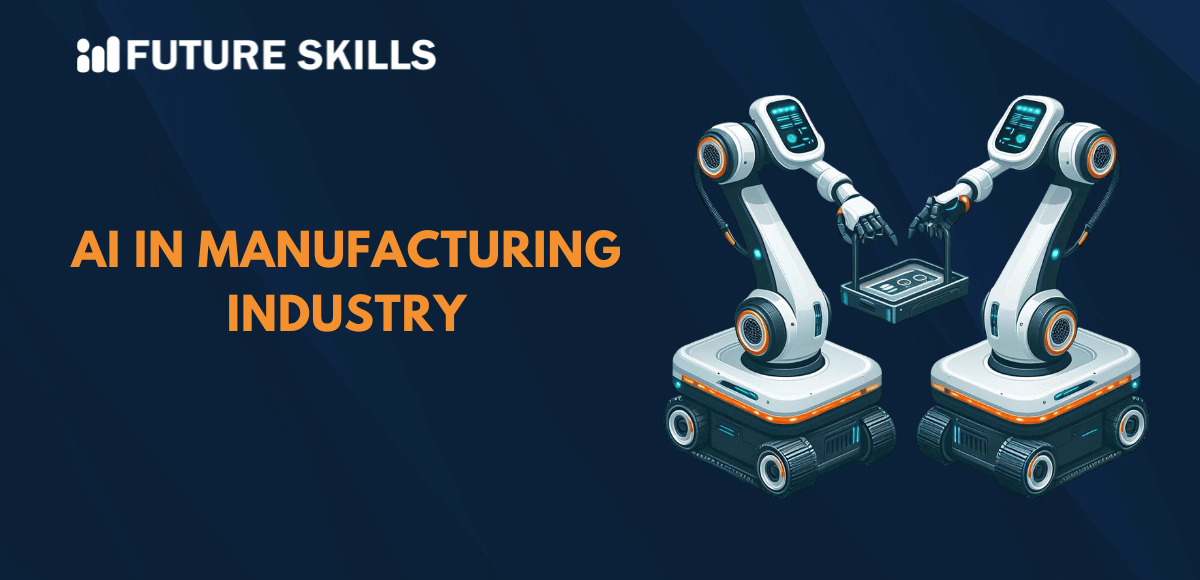Artificial intelligence has become the topic of discussions in cafeterias and board rooms all over the world. It is no longer limited to the reach of experts only, as it invites the attention of every curious learner. Artificial intelligence has gradually transformed into a mainstream necessity for businesses in almost every industry. Have you been struggling with AI terms and definitions that seem completely out of this world? Losing yourself in the flood of technical jargon related to AI can be quite frustrating, especially for a business leader. Even a tech-savvy person might find it difficult to keep up with the new words that come forward as AI continues growing. If you don’t want AI terminology to feel like a foreign language, then you must use a glossary. This post gives you the most concise A-Z AI glossary with relevant terms that an AI professional would need for work and education.
Embark on a transformative journey into AI, unlocking career-boosting superpowers through our Certified AI Professional (CAIP)™ Certification program.
The Simplest A-Z Glossary of AI Terms
Artificial intelligence is not just an emerging technology anymore. Business owners in different industries must know the meaning of different AI terms and phrases. You might need an AI terminology cheat sheet to decipher the meaning of every new term you find while working with or learning artificial intelligence. The following terms will help you understand and discuss how to implement AI systems and applications while unlocking their potential.
AI Alignment
AI alignment is a crucial subdomain of AI that focuses on ensuring that the objectives of an AI system align with the requirements of users or designers. The focus of AI alignment revolves around achieving desired objectives and incorporating ethical values and standards of creators and users.
Algorithm
AI algorithms are the computer programs that include a set of instructions for analyzing data and recognizing patterns. The computer program uses the information extracted from data and pattern analysis to learn and take decisions independently.
Artificial General Intelligence
Artificial General Intelligence or AGI is a variant of artificial intelligence that focuses on understanding, learning, and applying intelligence in different tasks like humans. It is one of the unique additions to an A-Z AI glossary as it describes the potential future of AI when it will have cognitive abilities of humans.
Artificial Narrow Intelligence
Artificial Narrow Intelligence or ANI is the version of artificial intelligence that you notice in everyday applications of AI, such as virtual assistants and recommendation engines. As compared to AGI, artificial narrow intelligence has a limited scope of objectives and specializes in specific tasks.
AI Ethics
You cannot think of a generative AI glossary without AI ethics. It refers to the discipline that aims to address ethical concerns in the domain of artificial intelligence. AI ethics asks the relevant questions about principles and methods for creating and implementing AI systems. The primary objective of AI ethics revolves around ensuring secure and transparent AI systems.
Excited to understand the crucial requirements for developing responsible AI and the implications of privacy and security in AI, Enroll now in the Ethics of Artificial Intelligence (AI) Course
Bias
Bias is one of the biggest concerns in AI as it introduces systematic error in the data or algorithms that power AI systems. The impact of bias in AI systems results in skewed or unfair results. It is important to address the problem of bias to ensure that AI systems can make equitable and transparent decisions.
Bot
One of the common terms that you will come across frequently in the AI landscape is bot. It represents any software application capable of running simple and repetitive tasks with automation. You can come across the examples of bots in customer service and conversational AI applications.
Chatbot
Chatbots are also popular terms in any artificial intelligence glossary as you can find their examples in the real world. Any chatbot is a type of software program that leverages natural language processing to engage in human-like dialogue with users. The notable areas of chatbot applications include customer support and service.
Cognitive Computing
Cognitive computing is a discipline of AI that aims to simulate human thought process and cognitive abilities in machine learning models. The objective of cognitive computing emphasizes creation of systems that can solve complex problems by simulating human reasoning capabilities.
Computer Vision
The list of common AI terms and definitions must also include computer vision as it is a formidable branch of AI. Computer vision focuses on empowering computers with the power for recognizing and analyzing visual data from the external world. It plays a major role in creating systems for image classification, facial recognition, and object detection.
Start your journey to becoming a successful prompt engineer—no coding required. Enroll in the Certified Prompt Engineering Expert (CPEE)™ Certification today!
Deep Learning
Deep learning is a vital domain of machine learning that leverages neural networks with different layers. The multi-layered design serves a valuable role in AI systems designed for image and speech recognition.
Data Augmentation
Any artificial intelligence glossary without data augmentation in it might not be complete after all. Data augmentation refers to the process of enhancing size and variety of a dataset through different techniques. Transformation techniques like scaling, flipping, and rotating in data augmentation enhance the generalization capabilities of AI models.
Deep Reinforcement Learning
Deep reinforcement learning or DRL is a subdomain of artificial intelligence that leverages principles of reinforcement learning and deep learning. It involves training agents to come up with decisions on the basis of trial-and-error along with other data points such as visuals.
Ensemble Learning
Ensemble learning is a crucial process in the AI landscape as it focuses on enhancing performance through the combination of different machine learning models. The common techniques used in ensemble learning include bagging, stacking, and boosting.
Explainable AI
Explainable AI is a unique term in any AI terminology cheat sheet that represents techniques that help in ensuring transparent decision-making processes in AI models. It plays a crucial role in building trust alongside achieving more accountability in AI solutions.
Feature Engineering
Feature Engineering refers to the process in which you select, modify, and create new features with the help of raw data. It is useful for improving the performance of machine learning models incorporated in AI systems.
Generative Adversarial Networks
Generative adversarial networks or GANs are a type of neural network that can generate new data samples from a specific dataset. GANs use two different networks that work in opposite to each other and generate creative outputs.
Generative Pre-trained Transformer
Generative pre-trained transformer or GPT refers to a class of language models created by OpenAI that can create human-like text. GPT models can predict the next word in a sentence on the basis of their training dataset which is a huge corpus of text.
Build ChatGPT skills and take the first step to becoming superhuman with our free ChatGPT and AI fundamental Course
Generative AI
Generative AI refers to the domain of AI that helps in generating new text, data, and images by using neural networks. It plays a vital role in replicating and generating content from learned distributions. Generative AI serves as the best pick for tasks such as simulation, data augmentation, and synthesis.
Hyperparameter Tuning
Hyperparameters are specific configurations defined before training AI models and the process to optimize them is known as hyperparameter tuning. Hyperparameter tuning is a must-have addition to a generative AI glossary and represents optimization of hyperparameters through different experiments to achieve better model performance.
Large Language Models
Large language models or LLMs are a variant of machine learning models with capabilities for understanding and creating text-based content. LLMs use large amount of data and principles of machine learning to ensure promising performance in natural language understanding and generation.
Machine Learning
There is no way you can create an A-Z AI glossary without mentioning machine learning or ML. Machine learning is a subdomain of AI focuses on training algorithms for pattern recognition and data-based decision making. Machine learning models have the capability to draw relevant inferences from historical data and learn from it to ensure continuous improvement.
Enroll now in the Machine Learning Essentials Course to leverage ML algorithms like decision trees, neural networks, and support vector machines for different tasks.
Multimodal AI
Multimodal AI represents any type of AI system that can take and generate different types of data such as numerical data, images, videos, audio, and text. The uniqueness of multimodal AI systems is visible in their ability to generate output or predictions in different types of data.
Natural Language Processing
Natural Language Processing or NLP is a popular domain of artificial intelligence that helps computers in engaging in human-like conversations with users. NLP empowers computers to understand, interpret, and modify human language.
Overfitting
Overfitting is also a common addition to any generative AI glossary as it represents a modeling error. It happens when ML models learn noise in the training data thereby affecting the performance of a model on new data.
Prompt Engineering
Prompt engineering is the process of generating prompts that can guide AI models in the desired direction. It aims at optimizing the performance of AI systems and ensuring that AI models generate relevant content.
Support Vector Machine
Support Vector Machine or SVM is a type of supervised learning used in classification and regression analysis tasks. It determines the hyperplane for ensuring optimal differentiation between multiple classes in the feature space.
Variational Autoencoder
Variational Autoencoder or VAE is a versatile AI model that uses deep learning for generating new content, filtering noise, and detecting anomalies.
Zero-shot Learning
Zero-shot learning is a machine learning modality in which models use information from similar concepts for object detection tasks. It is useful for working with new data that the model has not seen before.
Enroll now in the AI for Business Course to understand the role and benefits of AI in business and the integration of AI in business.
Final Thoughts
The artificial intelligence glossary showcases some of the most important terms that you will need while interacting with AI. You can use this A-Z AI glossary as a cheat sheet to gain a fundamental understanding of terms that are difficult to understand. Learn more about each term and get ahead to enhance your AI knowledge.






